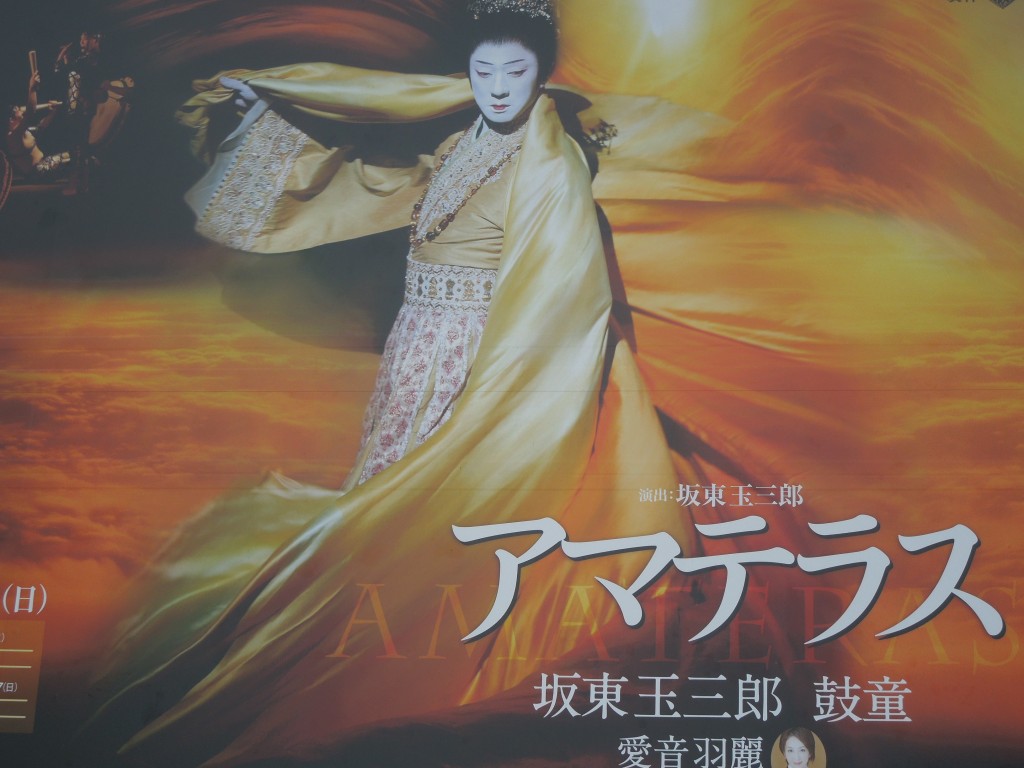
Poster showing kabuki actor Bando Tamasaburo as Amaterasu
This month there has been a production of ‘Amaterasu’ at Kyoto’s Minami-za theatre starring Bando Tamasaburo as the lead in the famous Rock Cave myth as told in Kojiki (712). Tamasaburo is kabuki’s most famous ‘onnagata’ (female impersonator), and as well as playing Amaterasu he also conceived the costume and choreopgraphy for the piece. As a piece of theatre it was literally throbbing with vitality, thanks to the inspired and superlative drumming of the world-famous taiko group, Kodo.
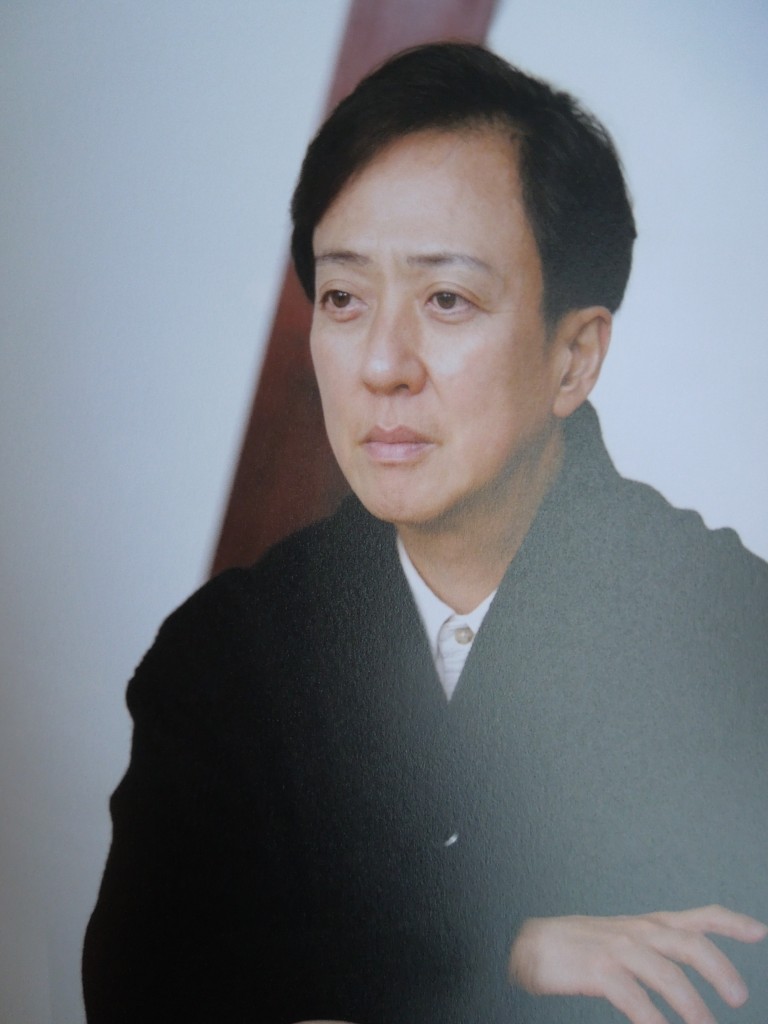
Another side of Bando Tamasaburo
The whole piece was done without words, relying on the audience’s knowledge of the myth to piece together the exchanges. The opening saw Amaterasu in her heavenly palace weaving and dancing, as koto, flutes and chanters provided an atmosphere of peace and harmony. All was beauty and light, with Amaterasu in gorgeous flowing robes of yellow and orange.
Then Susanoo entered trailing long dark blue drapes which swirled and billowed as he danced around the stage. In the interactions between the siblings, he was all pent-up aggression while she was emollient and pacifying. The drums accompanying Susanoo then erupted into a storm-rage of frenzy which reached a stunning climax as he hurled the full force of his fury at her, and all at once the stage was plunged into darkness. Interval time, and a welcome break from the relentless intensity of Kodo’s phenomenal physical feats on the taiko.
The second half began amusingly with three of the heavenly deities in the dark, trying to locate each other by drum and cymbal sounds. The the assembly of the gods to discuss how to draw out Amaterasu from her cave was evoked by exchanges between different permutations of drummers, ranging from small groups to the full ensemble of small and large drums in a dazzling display of muscular power and whirling arms.
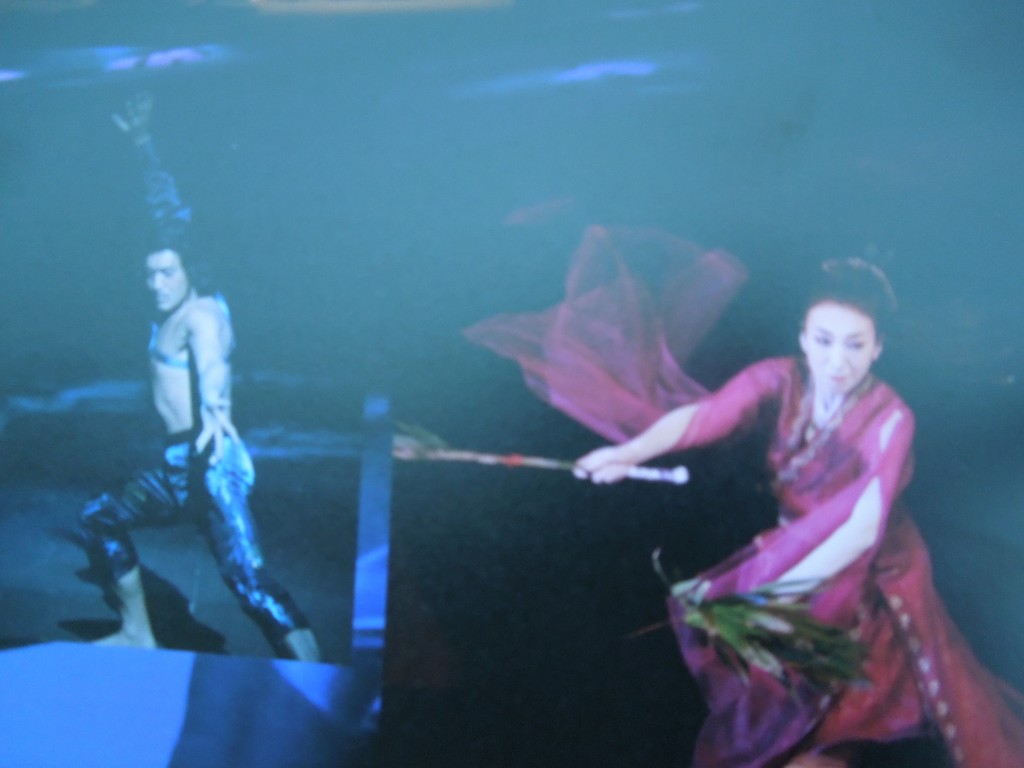
Susanoo who featured in part one, and Ame no Uzume in part two
Ame no Uzume appeared to do her dance for the assembled throng, and I wondered how the erotic aspect of her display would be handled. It was done rather cleverly in fact by her rolling on the floor and opening her legs towards Amaterasu’s cave, at which a crack in the curtains along the back of the stage opened to reveal a dazzling light behind, out of which Bando Tamasaburo emerged in a gorgeous glittering costume to pose centre stage and win an enormous round of applause. Thereafter s/he paraded around acknowledging the other deities and the entertainment they had provided. The mixture of kabuki theatrics and Kodo musicianship was a delight and the applause at the end was quite overwhelming – there must have been seven or eight encores and it seemed the audience would refuse to let the moment go…
Personally I found the actor playing Susanoo, Oda Yosuke, to be most impressive with his dark features, long hair, beard and dynamic movements. I was less impressed by Ame no Uzume, played by former Takarazuka performer, Aine Harai. Intriguingly Aine was the male role star in the all-female revue, like a mirror image of Bando Tamasaburo’s female impersonations. But what I didn’t find suitable for her part was the physical delicacy, with a long almost gaunt face and waif-like body. By contrast the mythic Ame no Uzume is understood to be an earthy buxom sort of woman whose physicality evokes fertility and a sensual style of dance.
Nonetheless the evening belonged to Bando Tamasaburo for conceiving the theatrical nature of the production, and above all to Kodo for the amazing performance of virtuoso drumming. It was, mythically and metaphorically, quite out of this world!
******************************************************************
“Amaterasu” was first performed in 2006 at Setagaya Public Theater and Minami-za Kabuki Theater to commemorate Kodo’s 25th anniversary. Encore performances were held in 2007 at Tokyo’s Kabuki-za. This year, the production was revived with a completely new cast. For more details, see here.
*******************************************************************
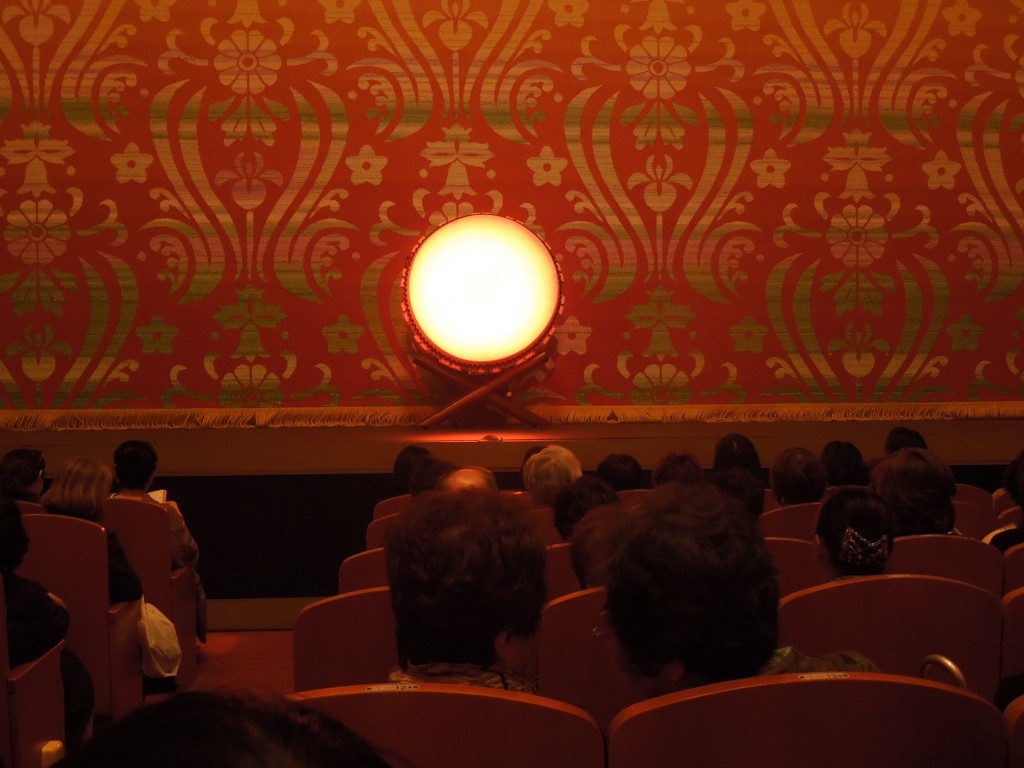
Clever lighting effect created this round drum-sun-mirror preceding the production
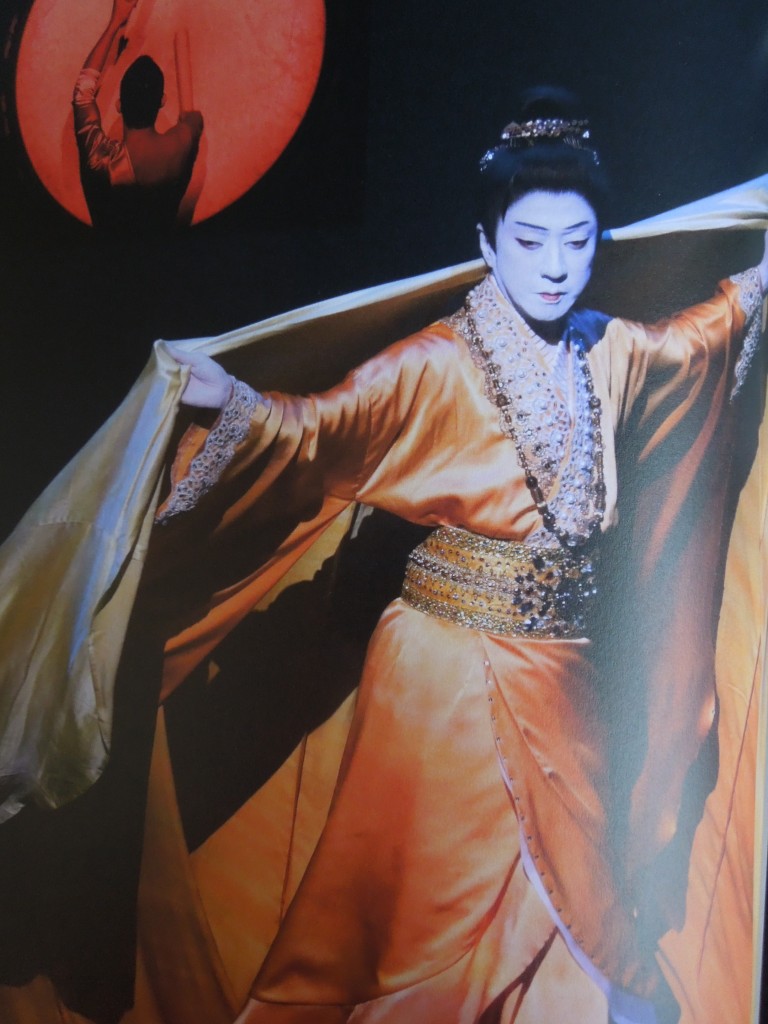
The dazzling sun at the heart of the show
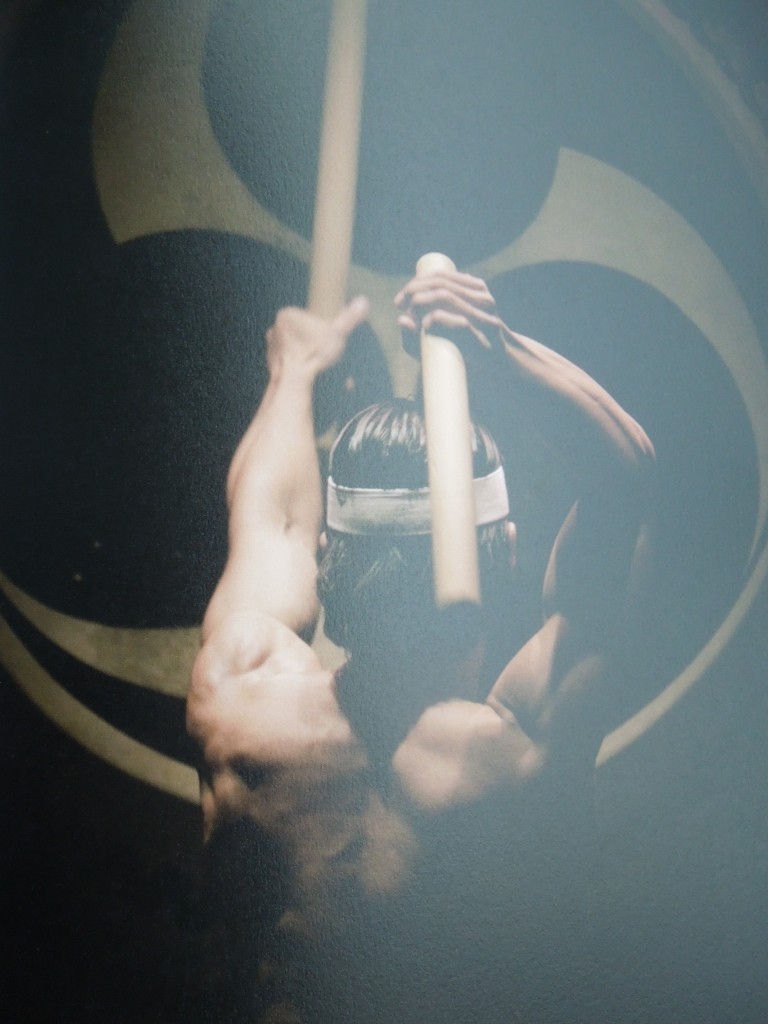
Passion, drama, power and spectacle from a Kodo drummer
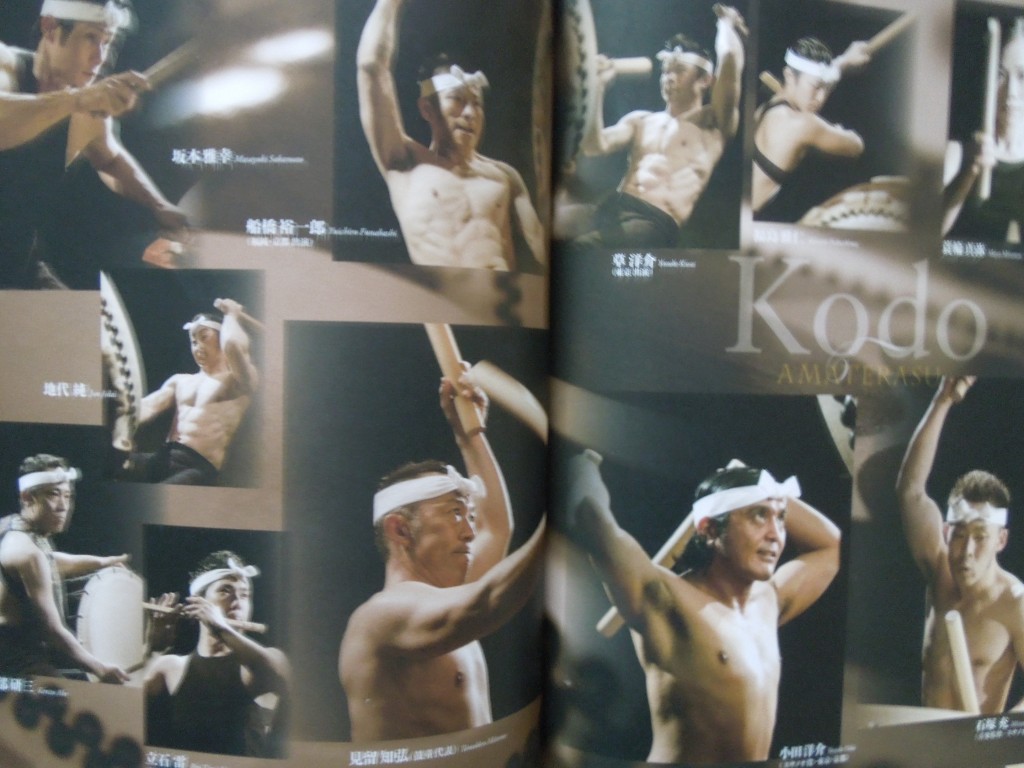
Part of the Kodo ensemble – I counted 19 altogether and at times visually and acoustically the effect was stunning
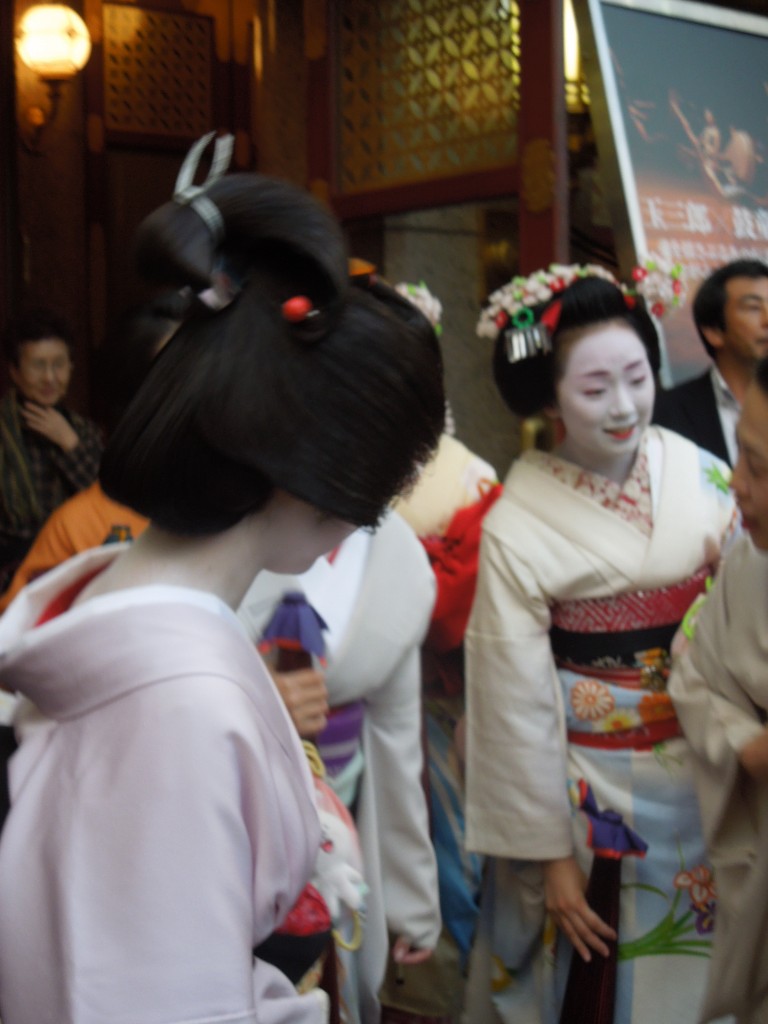
Even the maiko were impressed, I overheard them telling each other

Leave a Reply